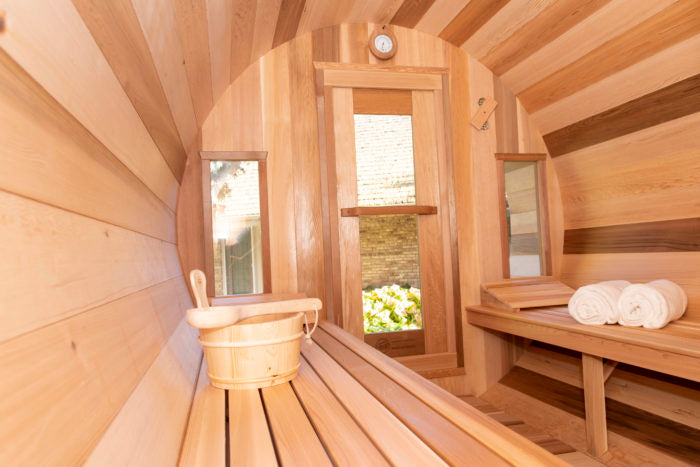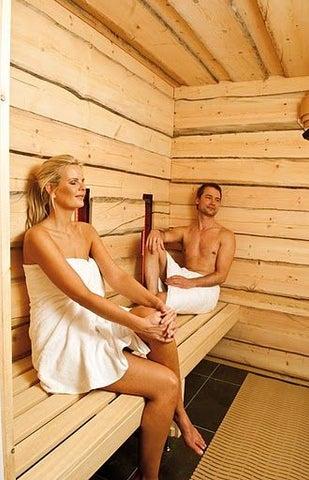The Ultimate Guide To Traditional Sauna
The Ultimate Guide To Traditional Sauna
Blog Article
Not known Details About Traditional Sauna
Table of ContentsGetting My Traditional Sauna To WorkThe Only Guide to Traditional SaunaThe Facts About Traditional Sauna RevealedThe Greatest Guide To Traditional SaunaAll about Traditional Sauna
Many of the weight shed in a sauna is water loss and is re-gained upon rehydrating. Nevertheless, without a question sauna can be an important part of a healthy weight-loss program. To look at the distinctions between traditional and IR saunas, I will separate these right into proven, academic, and fabricated differences.Thus, the most popular point in the saunawhich goes to the ceiling straight over the sauna heateris normally between 185 and 190 F. Claims that a standard sauna goes beyond 200 F is simply not true and not appropriate for electric saunas sold in the United States. The temperature level for a far-infrared sauna is generally established between 120 and 140 F; however, unlike the conventional sauna, the goal in and IR area is not to attain a heat.

When a typical sauna has been appropriately heated up, the sauna wall surfaces are warm, the air temperature level has achieved established temperature level and the rocks are incredibly heated. As an intriguing side note, the heated wall surfaces and the rocks are releasing far-infrared heat, integrated with the heated air, to produce an "wrapping up heat".
The Ultimate Guide To Traditional Sauna
When the heat is achieved, the aspects cycle on and off to keep the heat. A lot of typical sauna users take pleasure in putting water over the rocks to develop steam to increase sauna humidity degrees. The advantages of pouring water over the rocks consist of: making the space more comfy, moistening the nasal passages, and enabling the usage of aromatherapy by blending important oils with the water.

When the power goes into the body, it causes the body temperature to increase and ultimately results in sweat. In an infrared sauna it is essential for the emitters/heaters to continue to be on virtually frequently. Given that there is no mass of rocks to preserve warmth, the sauna will cool if the emitters shut off.
Some Ideas on Traditional Sauna You Should Know
As discussed over, the sauna bather in an infrared space intends to place himself in front of running emitters to get optimal take advantage of the heat. The heating time for the two areas can be very various, depending upon how the spaces are used. For a traditional sauna, a bather must allow 30-40 mins for the room to attain a desired temperature level and to appropriately pre-heat the rocks.

A well built sauna will commonly achieve a temperature of 150-160 F in regarding 30-40 mins. For hotter temperature levels, the area may need to warm for a longer duration.
To some, 15 mins was "thrown away" while the infrared power heated the wood panels instead of heating up a body, while others locate a pre-heated area to be more comfy and think a raised starting temperature is needed to begin sweating. The length of recommended use for each room is approximately the same (10-15 minutes per session); however, due to the lower air temperatures and the capacity to really feel the results of infrared warmth much faster than a typical sauna, it discover this info here is not unusual for an individual to spend an overall of 20-30 minutes in an infrared sauna.
The Buzz on Traditional Sauna

The ordinary cost per kWH of electrical energy in the U.S. is around $0.11, so a 4.5 kW heater will set you back about $.50 to run for one hour, if the heating unit runs continually for one hour. Usually a sauna heating system will run for 75% of the very first hour and 50% of succeeding hours on since the aspects cycle once the established temperature level is achieved.
A two person far-infrared space is generally literally smaller than a conventional sauna, usually about 4' x 4' or smaller. The IR heating unit is normally 1.5-1.7 kW making use of a 120 volt browse around this web-site 15 amp plug-in solution. Since the room can be utilized quicker than a sauna space, we will certainly presume the area is made use of for to of an hour consisting of warmth up time.
Finally, there is a seldom talked about difference in the social experience between both spaces. While our society has shed a few of the social advantage of the standard sauna experience, it why not try these out can be really socially rewarding (Traditional Sauna). From family time in the sauna, to heart-felt conversations with better halves, to sauna partiesthe standard sauna experience can result in intimate socializing
6 Easy Facts About Traditional Sauna Described
A lot of higher end infrared spaces consist of colored light therapy, audio systems and full-glass fronts.
Report this page